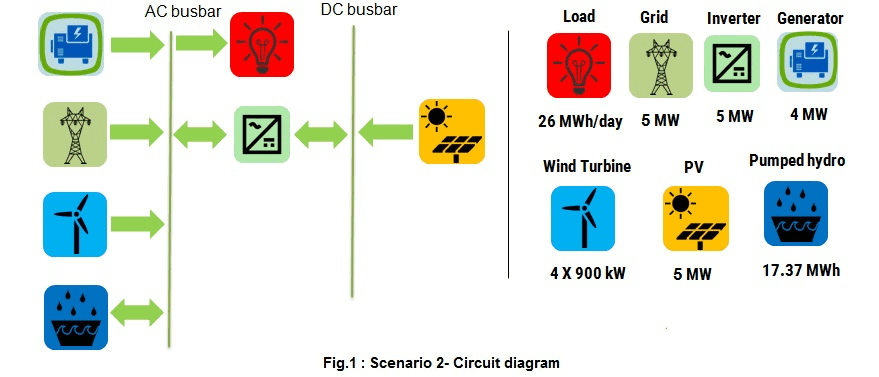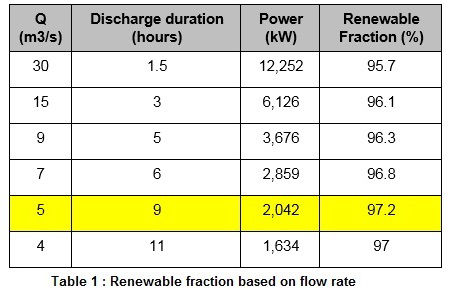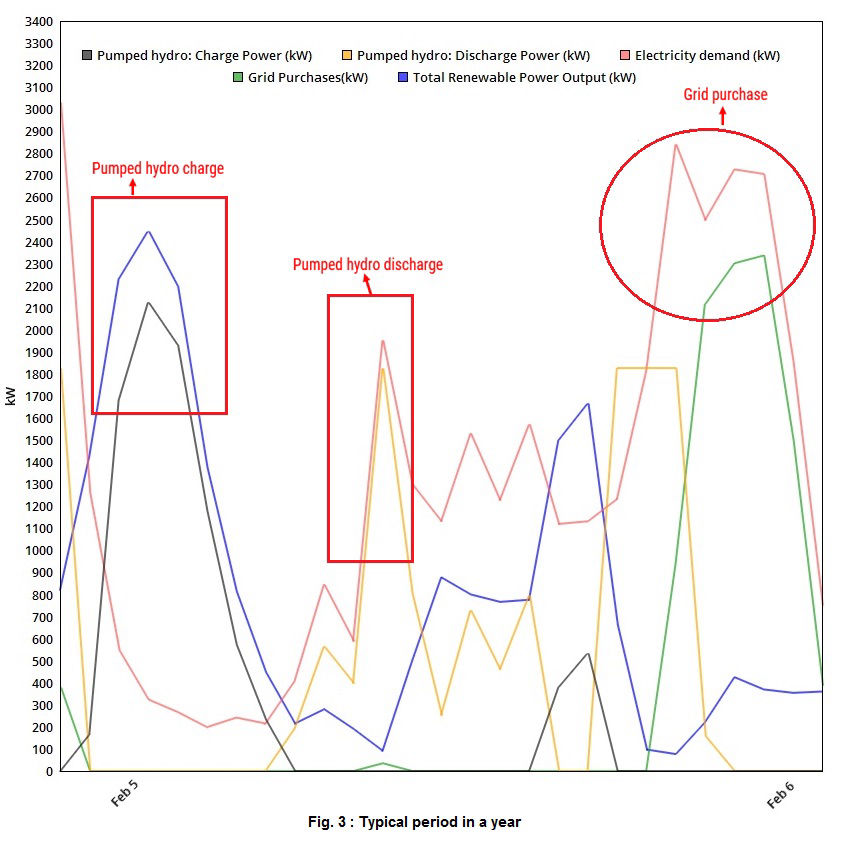Our recommendation model
5 MW PV + 4 X 900kW WT + Pumped hydro storage hybrid system
In this scenario, as Scotland has the abundant wind resources we have used wind potential in the form of wind turbines along with the proposed solar farm. Selecting storage option was the next challenge. Even though, we tried several options like lithium-ion battery, flow battery etc., finally, we decided to use the most reliable pumped hydro storage option. The inspiration from Okinawa, Japan lead us to use the similar seawater pumped hydro at the Cumbrae as well. Later, we find out an existing reservoir at the Cumbrae which has the potential to use for the energy storage.
Then, as in other scenarios, the result of this combination is evaluated in terms of the renewable fraction, decrease in Cost of electricity(COE), and % of CO2 emission reduction compared with the current situation. The current COE is estimated as 9.88 pence/kWh, and current CO2 emission is calculated as 6000 tonnes/year. Also, currently the Cumbrae doesn't have any renewable generation, hence, the renewable fraction is zero. To know more about our baseline values, please click here.
We have used 'HOMER Pro' software to design this combination. The circuit diagram that we developed to calculate the output from this Hybrid combination model is given in figure 1.




